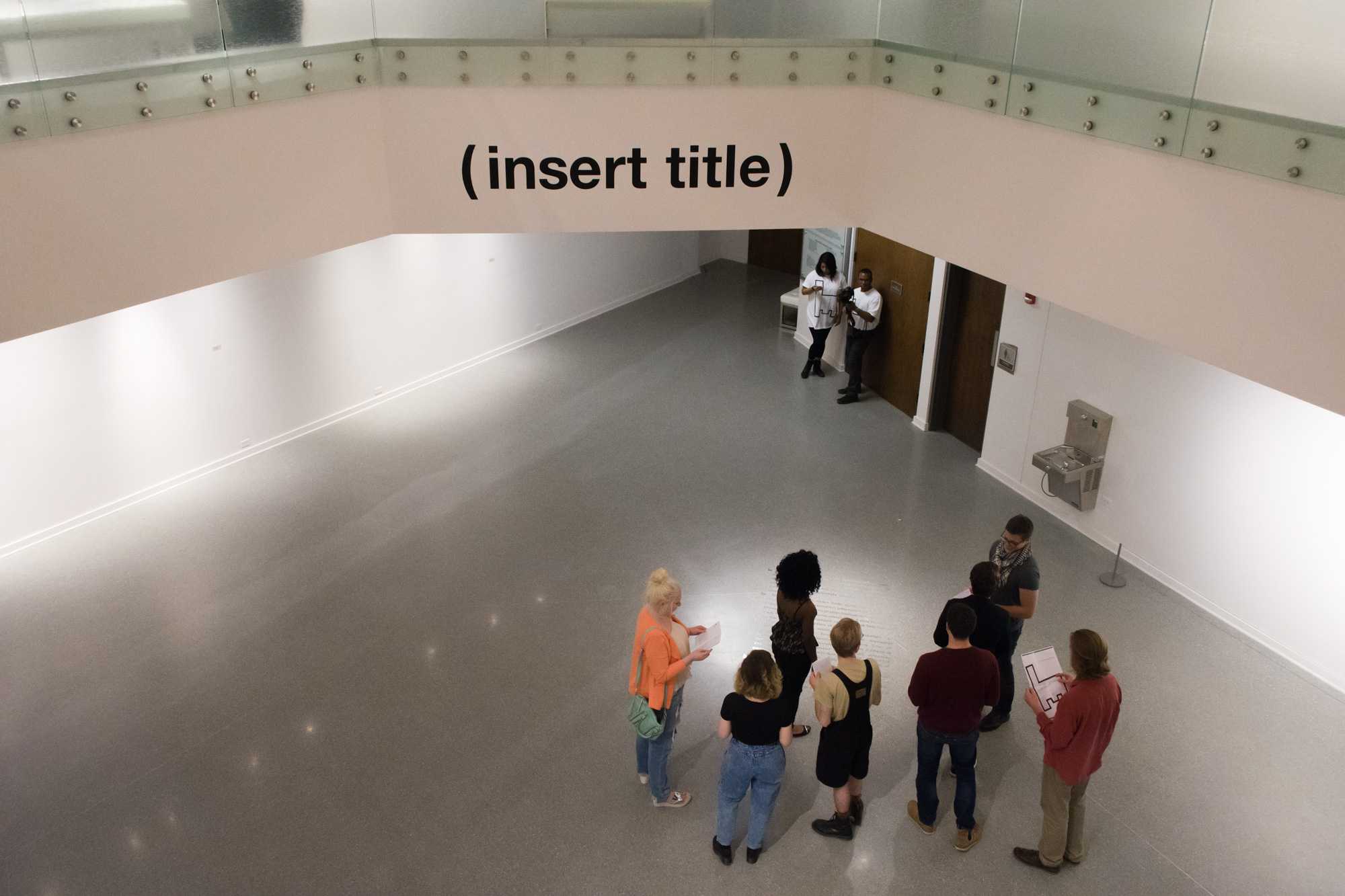To the far left of the ticket sales window at the Schaefer Center for the Performing Arts, there is an art gallery. On April 1, at the doors of the Smith Gallery, there was a man wearing a white T-shirt with a black logo. “Thank you for coming,” he said as he handed out a flyer to everyone who walked through the doors to the art exhibition, “Le_enterprise presents: (insert title).”
The exhibit was a stretch of the white walls lit by spotlights. On the walls under the light, there were little rectangular labels that read, “(insert title).”
Claire McKeown, senior studio art major and gallery assistant, stood at the front desk and handed attendees passes that were small, white metal clips. Other gallery assistants, all wearing the same shirt as the man at the door, instructed spectators to not take flash photography and to not touch the art.
To some, there was no art on the walls, to others the art was everywhere. The exhibition was only open for one hour and during that time, Hannah Crowell, gallery director, posed the question, “How does art exist?”
Does art exist alone? Does art exist without a person observing or interacting with it? Does art exist only as an idea in the mind of the creator? Crowell said that with how they are using the Smith Gallery space for “(insert title)” art exists because people showed up.
“That is the most important part of the gallery or museum experience, the people who show up,” Crowell said.
Kyle Hazard, Smith Gallery assistant and senior art management major, curated the exhibition. He said he created the fake gallery, “Le_entreprise” in order to give himself a fake institutional credit. Hazard said he was inspired to curate “(insert title)” by his dream to be a contemporary art curator.
“When studying exhibitions, like art, is very hard to define what an exhibition is,” Hazard said. “I wanted to create an exhibition without the main focus, to see how to convince viewers to go through an exhibition without objects for them to look at.”
Hazard said he is really interested in the tradition of labeling wall text, handing out gallery guides and the title of the exhibition. He said that although this exhibition fell on April Fools’ Day, it was only by coincidence that the day made people think about why there was no art.
Crowell said that often art is seen as a two-dimensional object on the wall. She said that one of the goals of the Smith Gallery is to change the art experience by creating the “event of art and a fourth dimension to the experience of art.”
The reality of the Smith Gallery, Crowell said, is that it struggles with its identity because it is also the lobby to the Schaefer Center.
Crowell said that Hazard’s exhibition challenges the struggle for identity within the Schaefer Center, saying that the Smith Gallery is always fighting for audiences who are coming to see a show in the theater because the audience usually disregards what is on the walls of the lobby.
“So, how we are using the space for this event is that, we are asking people to stay away from the nonexistent,” Crowell said.
Jason Wright, junior graphic design major, was the man handing out gallery guides at the door and he designed the logo for the exhibition and the T-shirts. Wright said that the design is comprised of the shapes of an “L” and “e” from the title “Le_entreprise” but are arranged in a way that resembles the outline of a factory.
“[The design] was a combination of the ‘L’ and the ‘e’ of the title ‘Le_entreprise,’ but I was also influenced by a factory,” Wright said. “Like how museums and galleries kind of churn out artwork like a factory. This was the conceptual idea that Kyle and I discussed.”
To Wright, “(insert title)” was about curation as art; the curator has become the artist in the 21st century and that going to an exhibition can be art in itself.
“It is also commentary on the stereotypes about the different things you see in a gallery,” Wright said. “Which I think is interesting because it causes people to interact when there is no artwork on the walls, it gives you the chance to be forced to interact with those things that make you uncomfortable.”
Liam Black, a sophomore economics major, heard about exhibition from the Facebook page created by senior public relations major, Dave Dykes. Black said that “(insert title)” is about the experience.
“Maybe not like the lasting impression of a physical art piece, but the social interaction of everything is pretty enticing,” Black said.
Story by: Katie Murawski, A&E Editor

